Giro d’Italia 2013 stage 5 is a flat stage between Cosenza and Matera. The length of the course is 203km.
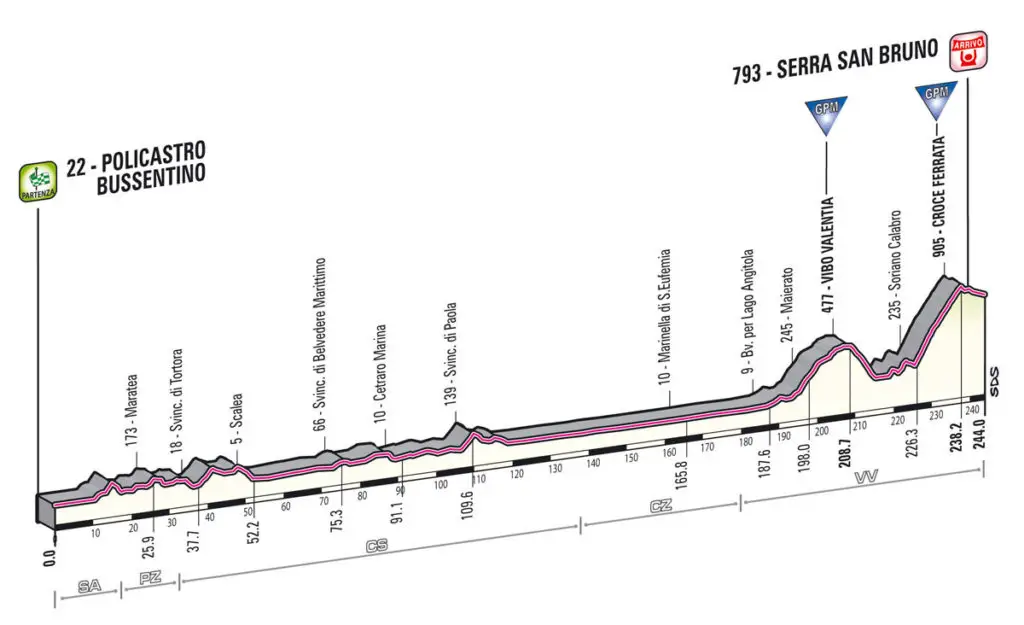
Previous stage: Giro d’Italia Stage 4 details

Next stage: Giro d’Italia Stage 6 details
Giro d’Italia 2013 Stage 5 quick info
- DATE: May 08 2013, Wednesday
- STAGE TYPE: Flat
- START-FINISH: Cosenza (205m) > Matera (398m)
- LENGTH OF THE COURSE: 203km
- DIFFICULTY:
Giro d’Italia 2013 Stage 5 profile
The Montescaglioso climb (21.3km before the finish line, highest point 309m) can make an elimination between sprinters, and the finish is slightly uphill. So better climbing sprinters may have an advantage for the stage win.



Cosenza

Cosenza is a city located at the confluence of two historic rivers, the Busento, and the Crathis, in the Calabria region of southern Italy. The municipal population is of around 70,000; the urban area, however, counts over 260,000 inhabitants. It is the capital of the homonymous Province of Cosenza, which has a population of around 733,000. The ancient town is the seat of the Cosentian Academy, the oldest academy of philosophical and literary studies to be founded in Italy (1511) and one of the oldest in Europe. To this day, the city remains a cultural hub with several museums, theatres, libraries, and the University of Calabria.
Located at the confluence of two ancient rivers, the Busento and the Crati, Cosenza stands 238 m above sea level in a valley between the Sila plateau and the coastal range of mountains. The old town, overshadowed by its Swabian castle, descends to the river Crati. The modern city lies to the north, beyond the Busento, on level ground.
Almost completely surrounded by mountains, Cosenza is subject to a microclimate scarcely influenced by the Mediterranean Sea, with cold winters and hot summers.
Montescaglioso
Montescaglioso (Montese: Mònde) is a town and comune in the Province of Matera, Basilicata, southern Italy. Historically, it was the centre of a county in the Norman Kingdom of Sicily.
The town’s economy is mostly based on agriculture, including the production of renowned oil and wine, as well as traditional food.
Matera

Matera is a town and a province in the region of Basilicata, in southern Italy.
As the capital of the province of Matera, its original settlement lies in two canyons carved by the Gravina River. This area, the Sassi di Matera, is a complex of cave dwellings carved into the ancient river canyon, often cited as “one of the oldest continuously inhabited cities in the world.” Over the course of its history, Matera has been occupied by Greeks, Romans, Longobards, Byzantines, Saracens, Swabians, Angevins, Aragonese, and Bourbons.
By the late 1800s, Matera’s cave dwellings became noted for intractable poverty, poor sanitation, meager working conditions, and rampant disease. Evacuated in 1952, the population was relocated to modern housing, and the Sassi (Italian for “stones”) lay abandoned until the 1980s. Renewed vision and investment led to the cave dwellings becoming a noted historic tourism destination, with hotels, small museums and restaurants – and a vibrant arts community.
Known as la città sotterranea (“the underground city”), the Sassi and the park of the Rupestrian Churches were named a UNESCO World Heritage Site in 1993. In 2019, Matera was declared a European Capital of Culture.

Old town, Cosenza 
Church of San Domenico, Cosenza 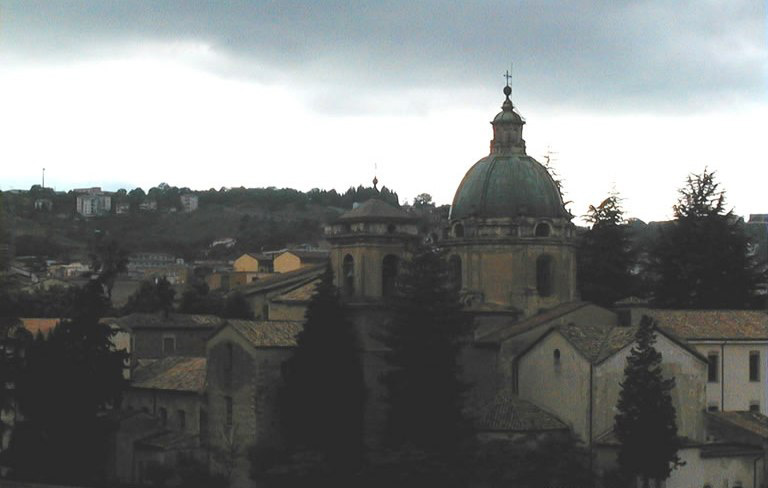
Church of San Domenico, Cosenza 
Cosenza town center. 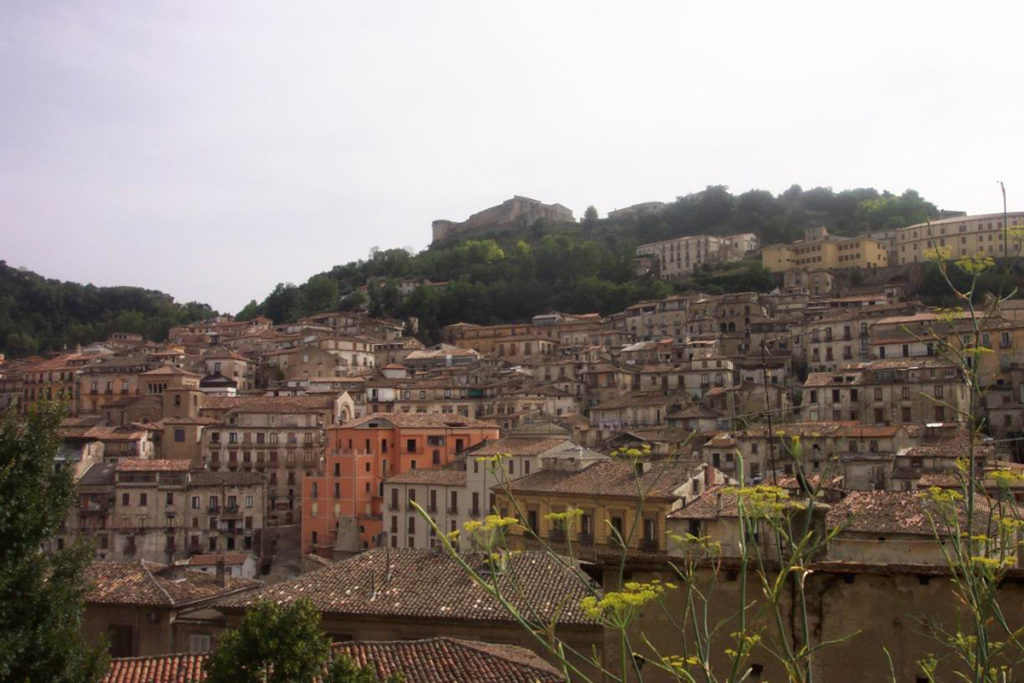
Cosenza 
Sunset in Matera 
Stairways in Matera 
San Giovanni Battista, Matera. 
Craco, near Matera 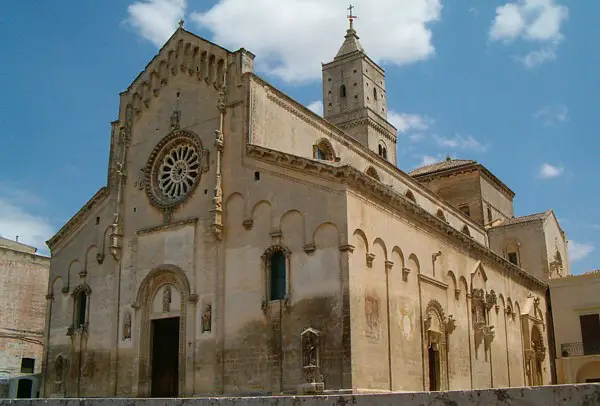
Cathedral of Matera 
Panorama of Matera, Italy 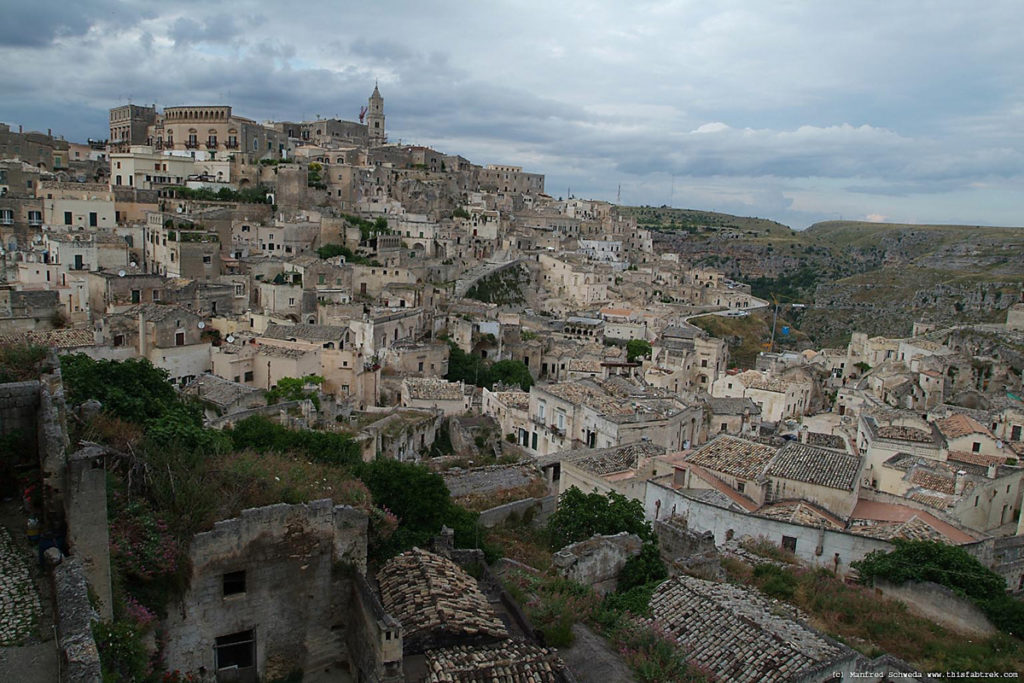
Matera, Italy 
Matera 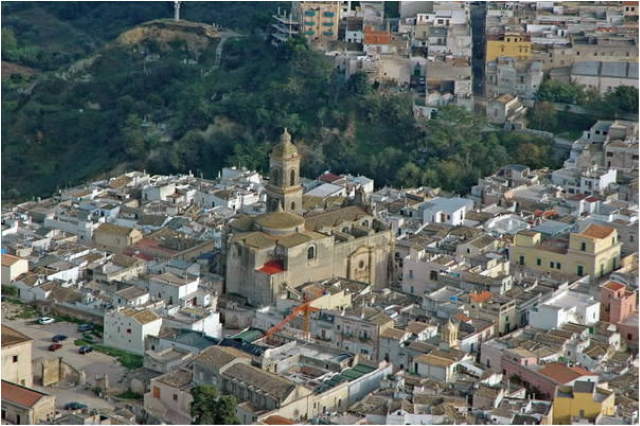
Montescaglioso panorama. By Matteo Visceglia – apt basilicata, CC BY 3.0, Link 
Montescaglioso 
Panaromic view of Montescaglioso 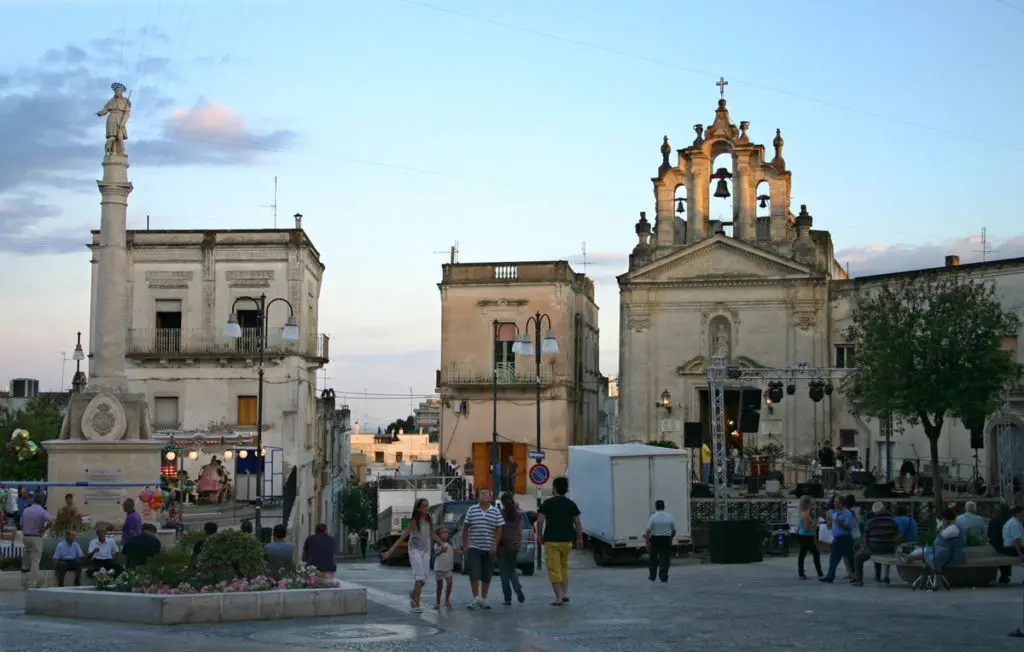
Montescaglioso
Sources
- Montescaglioso on Wikipedia
- Cosenza on Wikipedia
- Matera on Wikipedia

